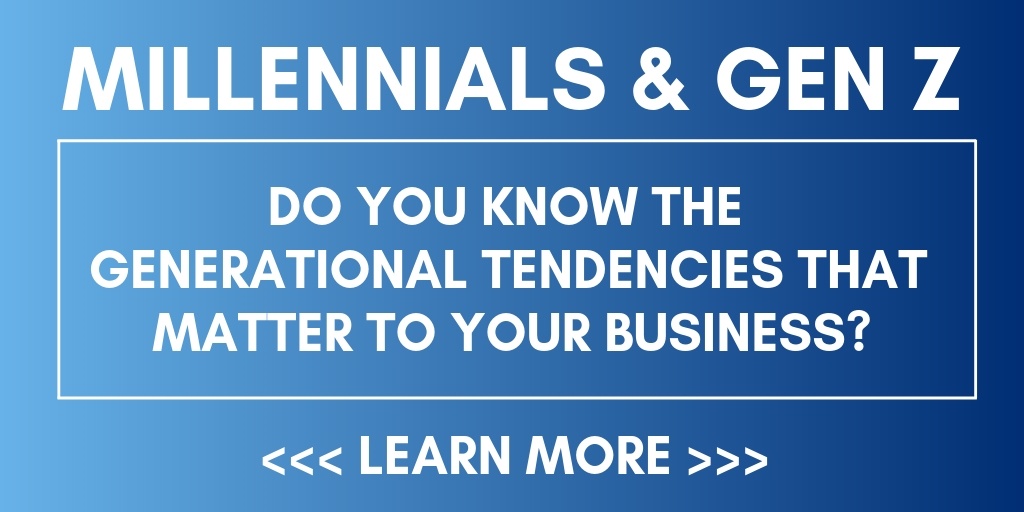The strategies behind these B2C concepts can help you speak to your clients.
You're likely familiar with the terms "B2B" and "B2C," but in case you aren't, B2B refers to business-to-business transactions (commercial), while B2C refers to business-to-consumer (end-users). Although agents spend much of their days working in the B2B world to find products, there are some fun trends we see in the B2C world that could help inspire your agency's next big ideas. We wanted to share three of our favorites – these companies are doing big things that have us thinking, “How can we harness that idea and translate it for the insurance industry?"
1. The blend of brick and mortar with digital technology
You’ve most likely seen the commercials that show a large building with a stylish design, a helpful team of uniformed employees, an extensive coffee or snack bar and strategically placed ATMs. No, this isn’t a Starbucks – it’s your neighborhood bank. Financial institutions are taking the lead in re-imagining traditional brick and mortar locations to keep them alive in the age of digital.
How are they doing this? They’re taking the necessary capabilities of a brick and mortar location, and then meshing the design with the ideal aspects of digital banking. The new creation has formed an interesting blend of consumer’s favorite parts of both online and in-person banking.
Financial institutions are not the only companies trying to keep up with the shift to digital. If you go into most retail stores and they don’t have your size or a certain style available, they’ll order it for you immediately and have it shipped to your home. It’s these capabilities and perks that keep consumers coming back to physical store locations.
Check out this example of a banking café from Capital One – it’s a place where you can not only bank and plan your financial future, but also engage with others and enjoy a coffee or snack.
The message we’ve taken from this idea, is that consumers want to see greater efficiency and speediness, but they don’t want to lose the human interaction. The question to ask yourself is, how can I improve my agency's processes and efficiency while incorporating the human factor?
2. Brand voices making a greater appearance
What’s the last commercial or social media post you can vividly remember? It stuck with you for a reason. It’s likely that the video or commercial you watched caught your attention because it perfectly captured that brand’s voice.
Right now, more brands than ever are using their voice to communicate with clients. We’ve seen this from many organizations, but the lasting impact is one that can’t be bought. For example, Coca Cola is known for their marketing strategies. They surprise clients with unexpected interaction that ends in delight for the brand. They use their bubbly and bright voice to make people smile and cement the brand in your mind as a positive, joyous company.
Companies who are able to do this effectively understand their brand and what it means to their target audience. The greater your brand voice, the better your client will understand your organization and recognize it in the marketplace.
Check out these seven examples of brand advocacy campaigns that rocked social media and delighted consumers.
Finding your agency’s brand voice can be a challenging task, especially if it hasn’t been set all along. If you don’t know where to begin, The Muse offers four steps to finding your brand voice as a starting point. Once you have your agency's brand voice fully developed, communication with your clients will become more meaningful and clear.
3. Helping the community in a creative but genuine way
Pizza delivery and potholes? Most people wouldn't connect these issues, but that pesky pit giving you hard time on your way to work may soon be filled thanks to help from Domino's. Domino's is filling potholes in municipalities around the country, to not only help your commute, but to keep your pizza safe on its route to your home.This is a more humorous example of companies helping their community, but in a way that you'll notice everyday. We've all hit a pothole and cringed, and the pizza chain wanted to ensure that your pizza gets to its destination in one piece (or if we're being technical, 8 pieces).
Allowing their customers to choose the towns around the US that would benefit from the initiative was a great way that Domino's was able to secure client interest and buy-in. Once a town had been chosen they worked with the municipality to fill the potholes. Officials in the towns impacted we're excited to announce the project because it helped them to stretch their already limited budgets a little further than normal.
As an insurance agent, how can you capture this idea and put it to good use? It depends on the needs of your clients and where funds could be used best. Consider sitting down with your team and brainstorming a few ideas. Your team can find an initiative that ties your organization's values to projects and goals that matter to your clients.
What are the trends you're seeing in the B2C world that are inspiring your next big idea? Share your favorites with us!
Have you checked out our latest blog? Millennials and Generation Z make up a large portion of the population — we're covering the generational tendencies that matter to your business. 
DISCLAIMER
The information contained in this blog post is intended for educational purposes only and is not intended to replace expert advice in connection with the topics presented. Glatfelter specifically disclaims any liability for any act or omission by any person or entity in connection with the preparation, use or implementation of plans, principles, concepts or information contained in this publication.
Glatfelter does not make any representation or warranty, expressed or implied, with respect to the results obtained by the use, adherence or implementation of the material contained in this publication. The implementation of the plans, principles, concepts or materials contained in this publication is not a guarantee that you will achieve a certain desired result. It is strongly recommended that you consult with a professional advisor, architect or other expert prior to the implementation of plans, principles, concepts or materials contained in this publication.
This blog post may contain the content of third parties and links to third party websites. Third party content and websites are owned and operated by an independent party over which Glatfelter has no control. Glatfelter makes no representation, warranty, or guarantee as to the accuracy, completeness, timeliness or reliability of any third party content. References to third party services, processes, products, or other information does not constitute or imply any endorsement, sponsorship or recommendation by Glatfelter, unless expressly stated otherwise.
Related posts
Here are five ways you can build, expand and strengthen your professional network on LinkedIn.
Telling a story doesn’t have to be long or complicated—in fact, sometimes simple is best.
So, you’ve signed up for LinkedIn, filled in all of the basic information (like your work history and education) and contact information—what’s next?







Submit a Comment